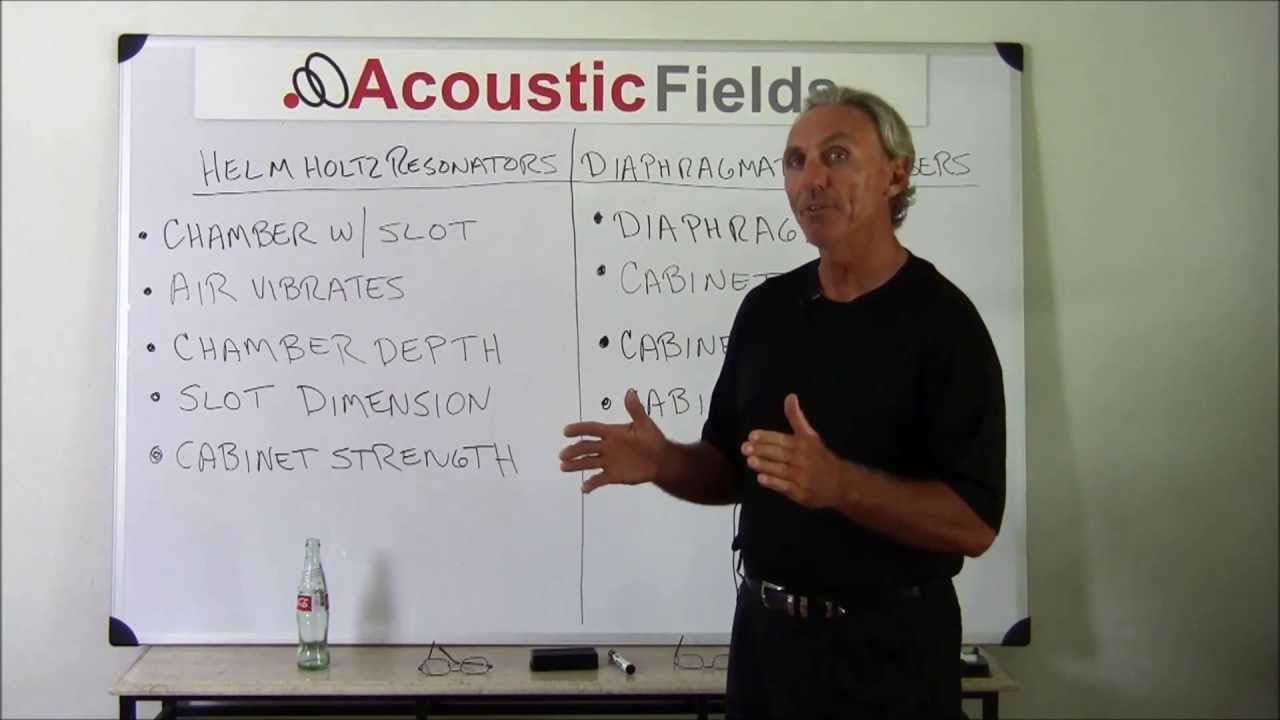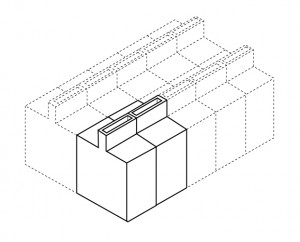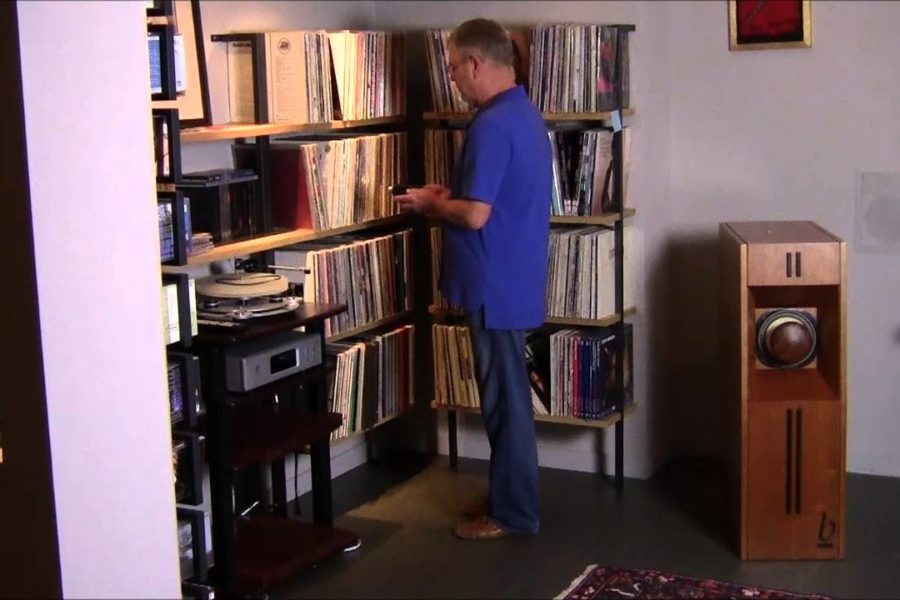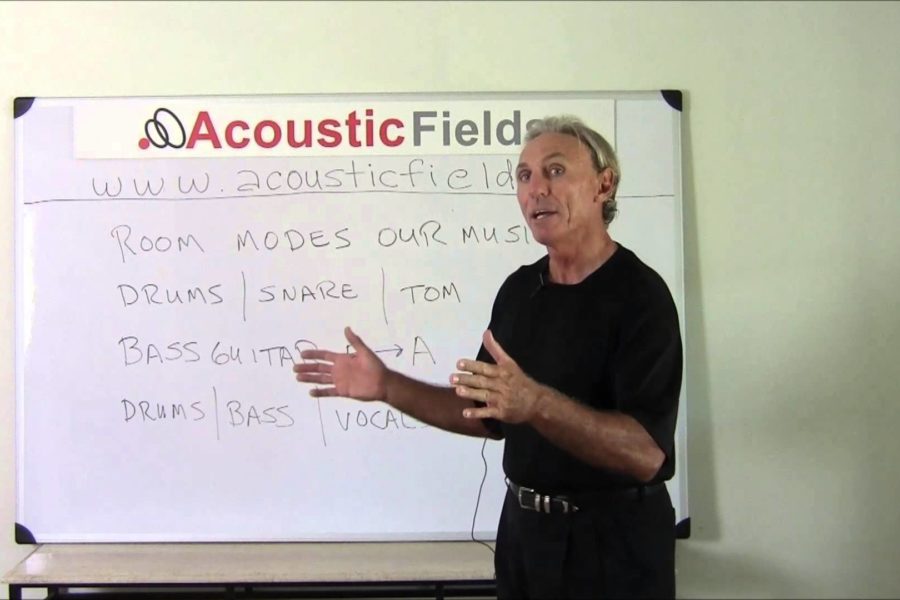In parts one and two of this series, we used a step by step procedure to identify at what frequency and at what room location, room modes were in your room. We walked every surface area of your room and measured to get the data.
Now, you must use the correct technology, especially low frequency sound absorption technology, to assist you in managing excess low frequency energy. Notice I said manage, not conquer. There are just some room sizes that will not work well with certain frequencies and all one can do is bring their level down to a level that does not interfere with the room’s intended function.
What choices do you have?
In this video I’m going to walk you through the two best solutions you should consider.
1. Helmholtz Resonators
There are two main technologies currently used today in new room construction low frequency sound absorbing techniques. The first is a resonating system maned after its German inventor. A Helmholtz resonator is a container that is solid that is sealed except for a slit cut into the top. It does not have to be a slit. It can be a port or round opening such as a coke bottle. A coke bottle is an example of a Helmholtz resonator that absorbs frequencies above 185 Hz. Its frequency of resonance is 185 Hz. All frequencies below 185 Hz. are not absorbed. All frequencies above 185 Hz. are.
Many Calculations
Helmholtz resonators can be designed to absorb down to one single frequency. To achieve this, you must calculate the port or opening shape and dimensions. Those shapes and sizes must be matched to the resonator itself. You must include volume of the container and of course, its construction. You want the resonator or vessel to be rigid and free from its own vibrations and thus sound producing artifacts. The cabinet or resonator should be as inert as possible and not move. The only thing moving is the air inside the resonator.
The problem with Helmholtz Resonators is that they are complicated to get right and don’t offer the flexibility or performance of the next choice, namely, a diaphragmatic absorber.
2. Diaphragmatic Absorber
The second type of low frequency technology that is available is diaphragmatic absorption. A diaphragmatic absorber has a front diaphragm or plate that moves in sympathy to the sound pressure exerted upon it. The front wall or diaphragm “vibrates” in response to the sound pressure exerted upon it. This slows the lower frequency energy down before it enters the inside of the cabinet.
The cabinet inside has a material that has a high absorption rate for the dimensions of the cabinet itself. The absorptive internal fill material has to handle all interior cabinet resonances along with absorbing other energies.
In this video I explain the process of diaphragmatic absorption so you can get a better feel for how it works.
Cabinet Design
The design frequency of the diaphragmatic absorber is calculated using the interior cabinet depth, the front wall diaphragm thickness, and the overall construction density of the cabinet itself. This is a sealed unit with no “air Holes” for sound to enter or escape. A 30 Hz. is 37′ long and does not need the permission of an air hole to enter any cabinet. It will simply power its way through the diaphragmatic absorber cabinet. Some of the energy will be converted to heat and absorbed, other energy will go through the cabinet itself back out into the room.
Broadband Absorption Technology
A diaphragmatic absorber is not designed for just a single frequency of absorption. Diaphragmatic absorbers are more broadband absorbers with frequency ranges of absorption. You can design a diaphragmatic absorber to absorb a small range of frequencies, but getting it to absorb just one is difficult. With the proper internal cabinet fill material, you can achieve a lot of absorption in a small amount of real estate. This is the true strength of this absorption technology. It is achieving high rates and levels in a small amount of real estate and is the technology I have focused on.
And this video explains why.
Technology Available
Since you have determined where your own room modes are and at what frequency they are, you now need to treat them. In my humble opinion you should choose to treat them with a diaphragmatic absorber. These can be bought ready made or you can build one of our own which will be able to absorb the problematic frequencies you have in your room.
You can choose a more broadband type of absorber for frequencies that are not over represented in your room mode plot map. Some frequencies show a +10 dB. or a +15 dB. gain over the normal pressure levels within your room. These frequencies will require more of a narrower range absorber that can absorb more of their respective energy. Using a diaphragmatic absorber with a deeper cabinet can achieve larger rates and levels of absorption for these tougher frequencies.
Cost Vs. Benefit
Place the absorber in the area indicated by your room plot map. You will need many absorbers because most rooms have many modal frequencies. The key is to get the diaphragmatic absorbers positioned correctly to have the greatest impact on the resonances you have within your room. It can be done with patience and proper room tuning techniques. This is the price you must pay for a flatter room response in a smaller room. Sometimes it may be easier and more cost effective to simply knock out a wall and enlarge the volume of your room… note I said sometimes.
To give you an idea of the power of diaphragmatic absorption go here to see the independently verified test results conducted by the world famous Riverbank Labs on our ACDA-12 unit, the most powerful free standing bass absorber in the world today. You can see those units here.
ACDA-12 Absorption Performance Chart
I realize that most peoples budgets won’t stretch to the ACDA units. That’s why I designed our DIY bass absorber unit which is available at a fraction of the cost – just $39.99!. The only difference between the DIY option and the ACDA (well apart from the $3,000+ price tag) is you have to build the DIY units yourself and they don’t come with our activated carbon. But still you get 75% of the performance of the ACDA units which is still light years ahead of any bass trap on the market. So hardly a problem if you’re serious about solving your room mode problem.
Plus, if you use the discount code BDA-DISCOUNT at the checkout today you get $10 off. A powerful solution to your room mode issues and a $10 saving! How’s that for a great deal?
Go here to take advantage of it:
DIY bass absorber unit – just $29.99 with discount code BDA-DISCOUNT!
The End
So that’s the end of the room mode journey. I hope this series has helped you appreciate this very important room acoustic topic. For room modes are serious problems that have to be dealt with if you are to truly enjoy all the music your system is producing or to mix with peace of mind.
It’s amazing what a game changer it is when you finally deal with them and hear the difference… Man I’ve had 60 year old plus guys with 40+ years of engineering experience crying in my studio having heard their music with the room taken out of the way. You suddenly hear textures in your music you never even knew were there.
As I say call me on 520–392–9486 or email me at a href=”mailto:info@acousticfields.com”>info@acousticfields.com if you want further advice with this.
Thanks and speak soon
Dennis










Dennis,
This last video is mind blowing!
Thank you very much for all the invaluable information shared in this video series.
I now have an educated understanding of what is happening in my 3200mm(L)x2600(W)x2400mm(H) Mixing , Guitar and Vocal tracking room,and with your QRD and BDA technologies I am on my way to mixes that translate to my Mastering Engineer every time with accuracy.
Hi Hayden,
Low frequency diaphragmatic absorption treatment and middle and high frequency diffusion are powerful tools in accurate translation. Its amazing to me that more people do not know the power of diffusion.